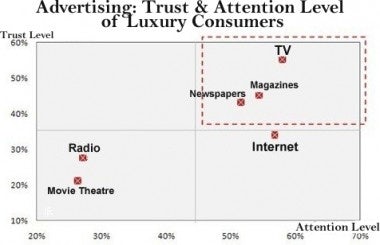Specialty Publications Catering To Country's New Rich Taking Off#

China Daily writes this week about the booming market for specialty publications catering to the country's newly wealthy, which has fueled the rise of dozens of niche magazines -- some of the most popular of which find it hard to keep up with advertiser demand. According to the Hurun Report, China is currently home to nearly a million millionaires, and the country is now the world's second-largest art and luxury markets. Since broader understandings of brand history and heritage, international designers, and arts education remain low in China, desire is clearly high to keep up with global fashion and lifestyle trends, and that's where print magazines come in.
From China Daily, which looks at the niche publication Bazaar Arts, introduced to China earlier this year by Harper's Bazaar to cater to "the increasingly diverse and expensive tastes of the Chinese elite":
Since its debut in January, the magazine has built up a stable circulation of 370,000 copies, making it "indisputably the arts magazine with the largest circulation in China", according to [executive editor Xu Ning]. "Apart from the 1 million-plus professional collectors in China, the magazine also aims to bring the arts to consumers of luxury goods, promoting the appreciation and collection of objets d'art among the Chinese elite," he said.
The publishers obviously picked the right time to launch the magazine. According to the China Art Market Annual Report released by the Ministry of Culture in May, the turnover of the art market in 2010 was 169.4 billion yuan ($26.6 billion), a rise of approximately 41 percent on 2009.
...
"The growing demand for luxury goods in China has accelerated the development of fashion magazines. But as the readers and consumers mature, their choice of luxury goods will, of course, become more personalized. It can be predicted that luxury brands with close connections to the arts and culture will receive more attention from the public. Therefore, these are the brands that Bazaar Arts, as well as other fashion-related magazines, should seek to cooperate with in the future," said Xu.
"Bazaar Fashion launched its first issue in 2001 and, we have helped China to enter and appreciate an era of luxury-consumption. With the launch of Bazaar Arts, hopefully, we will bring the arts - the ultimate form of fashion - to the upper echelons of Chinese society," said Su Mang, the magazine's executive publisher.

While these "vanity" publications may -- to casual observers or anyone put off by their preponderance of advertisements -- risk coming across as petty, the fact remains that they serve an important educational role among the country's emerging consumer base. While print may be in terminal decline in traditional markets like the US, Chinese readers have shown a strong preference for print publications, and advertisers have been all to eager to invest heavily.
As the Chinese market research firm Huicong D&B (慧聪邓白氏研究) pointed out in its annual Chinese High-End Consumers report this past August, 99.8 percent of respondents polled get the majority of brand information from print media, compared to 99.6 percent from the Internet. In terms of trustworthiness and attention levels, Huicong added, magazines and newspapers trail only television, indicating that print will remain a key source of information for the country's new high-end consumer for the foreseeable future.
